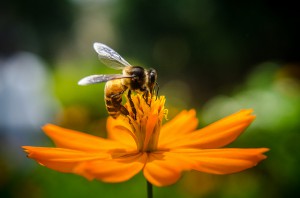Bumblebee foraging behavior deteriorates with pesticide exposure
 Photo credit: Rakib Hasan Sumon
Photo credit: Rakib Hasan Sumon
A recent study published in Functional Ecology found that when honey bees were exposed to sub-lethal levels of neonicotinoid and pyrethroid insecticides, commonly used in conventional farming systems, their foraging behavior became impaired. In order to test how a single exposure as well as long-term exposure affected the bees, researchers at Royal Holloway University in London used radio tags to monitor their daily behavior when they were exposed to low levels of insecticides. After the initial exposure to pesticides, subtle differences in bee behavior were observed. However, as the duration of exposure time increased, so did the impairment of bee individuals. This trend was particularly strong in bees exposed to neonicotinoids. Over time, impaired bees went on more foraging bouts and spent more time foraging but brought back smaller pollen loads as compared to colonies not exposed to pesticides. Additionally, as time passed, the number of worker bees in the pesticide-exposed colonies also increased faster than in control colonies. While colonies typically produce more worker bees over time in order to accommodate the growing hive, the authors suggest that hives chronically exposed to pesticides need to create even more worker bees than normal in order to compensate for the reduction in foraging efficiency. “Pesticide regulatory bodies must consider the chronic effect of specific pesticides on foraging performance of bees (and other pollinators) not only as this is important for bee colony success, but also because it is likely to have fundamental consequences for the essential pollination services they provide,” the authors concluded.



